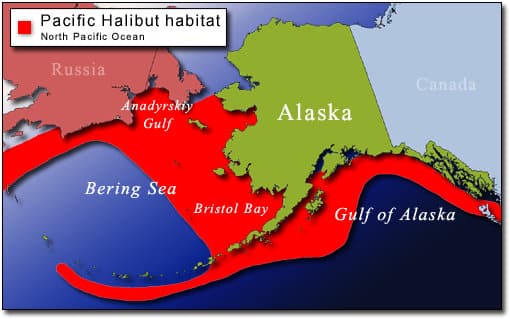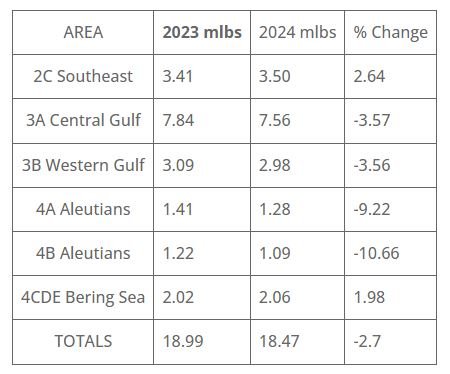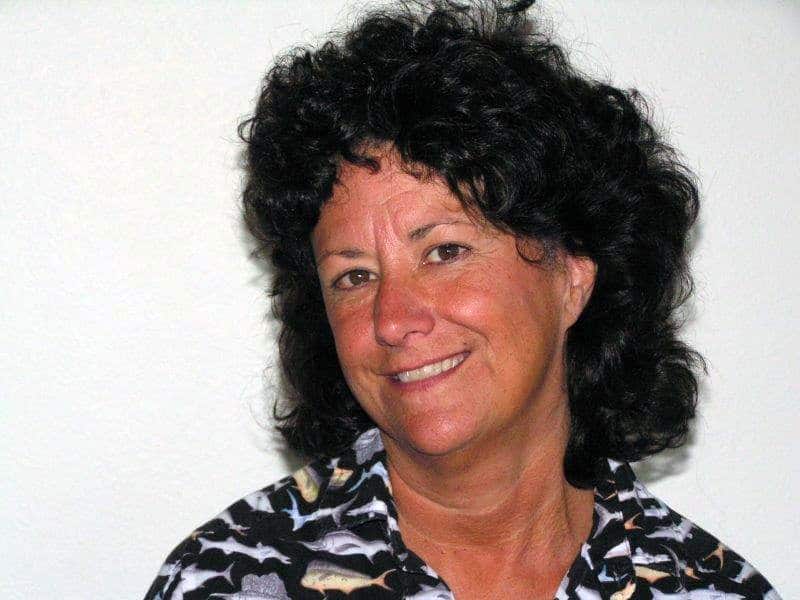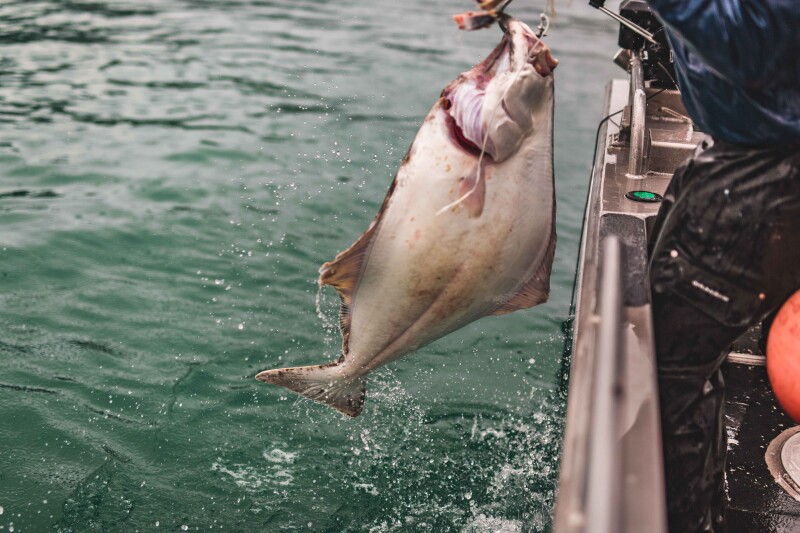A lackluster Pacific halibut season closes on December 7 in fisheries across Alaska, British Columbia and along the U.S. west coast.
By December 6, just over 74% of the 28.86 million pound coastwide commercial catch limit had crossed the docks since the fishery opened on March 15, with a net weight barely topping 21.43 million pounds. Fishermen for the most part reported sketchy catches and lots of smaller sized halibut.
Alaska always get the lion’s share of the annual commercial halibut catch which this year totaled 18.47 million pounds, a 2.7% decrease from 2023. By the season’s closure, Alaska fishermen had delivered nearly 14 million pounds to fishing communities across the state.
Fishermen at Southeast, Area 2C, caught 87% of their halibut limit, the harvest at the Central Gulf, Area 3A, came in at 91%, 3B, the Western Gulf, at 88%, at 4A, the Aleutians region, 55% of the allowable halibut was taken, and the Bering Sea areas of 4B were at 31% and 43% of the halibut catch limit.
Prices at major Alaska ports hovered around the $6 per pound mark during November, reported The Fish Ticket by Alaska Boats and Permits in Homer.
The top three ports for landings are all in Alaska. Homer ranked first at 3.56 million pounds, followed by Kodiak (1.68 million pounds), Seward (1.367 million pounds) and Petersburg (1.146 million pounds.

Gloomy outlook indicates decreased catches, again
The halibut catch rates set each year in January by the IPHC include all users: subsistence, commercial, sport and personal use.
For 2024, the combined total catch limit for all was set at 35.29 million pounds, down 4.57% from 2023. In meetings this year the Commission, which has overseen the Pacific stock for 101 years, gave a rather dour outlook for upcoming fisheries.
Its scientists pointed to a lack of halibut recruitment, reliance on a single 2012 year class and environmental conditions as having “uncertain” effects on the halibut stock. They also reported that the spawning biomass of Pacific halibut is near the lowest levels observed since the 1970s, the halibut are smaller than usual, and catch rates in nearly all regulatory areas are at or near the lowest levels observed in 40 years.
At its interim meeting held electronically in November, the IPHC said the halibut biomass this year is estimated to be down by 17% from last year, driven primarily by a lack of recruitment. The biomass for 2024 is estimated to be 17% less than last year. One small encouraging sign is that while the weight per unit of effort (WPUE) is down significantly, the numbers per unit of effort (NPUE) are actually ticking upward slightly.
“Meaning, there are fewer bigger fish and more smaller fish as the older and larger year classes disappear and the younger and smaller year classes enter into the fishery,” explained The Fish Ticket’s Maddie Lightsey.
Halibut catches for 2025 will be announced at the IPHC’s annual meeting is set for January 27-31 in Vancouver, British Columbia.
Here’s the breakdown for 2024 Alaska halibut catches in millions of pounds by region, with 2023 comparisons.








